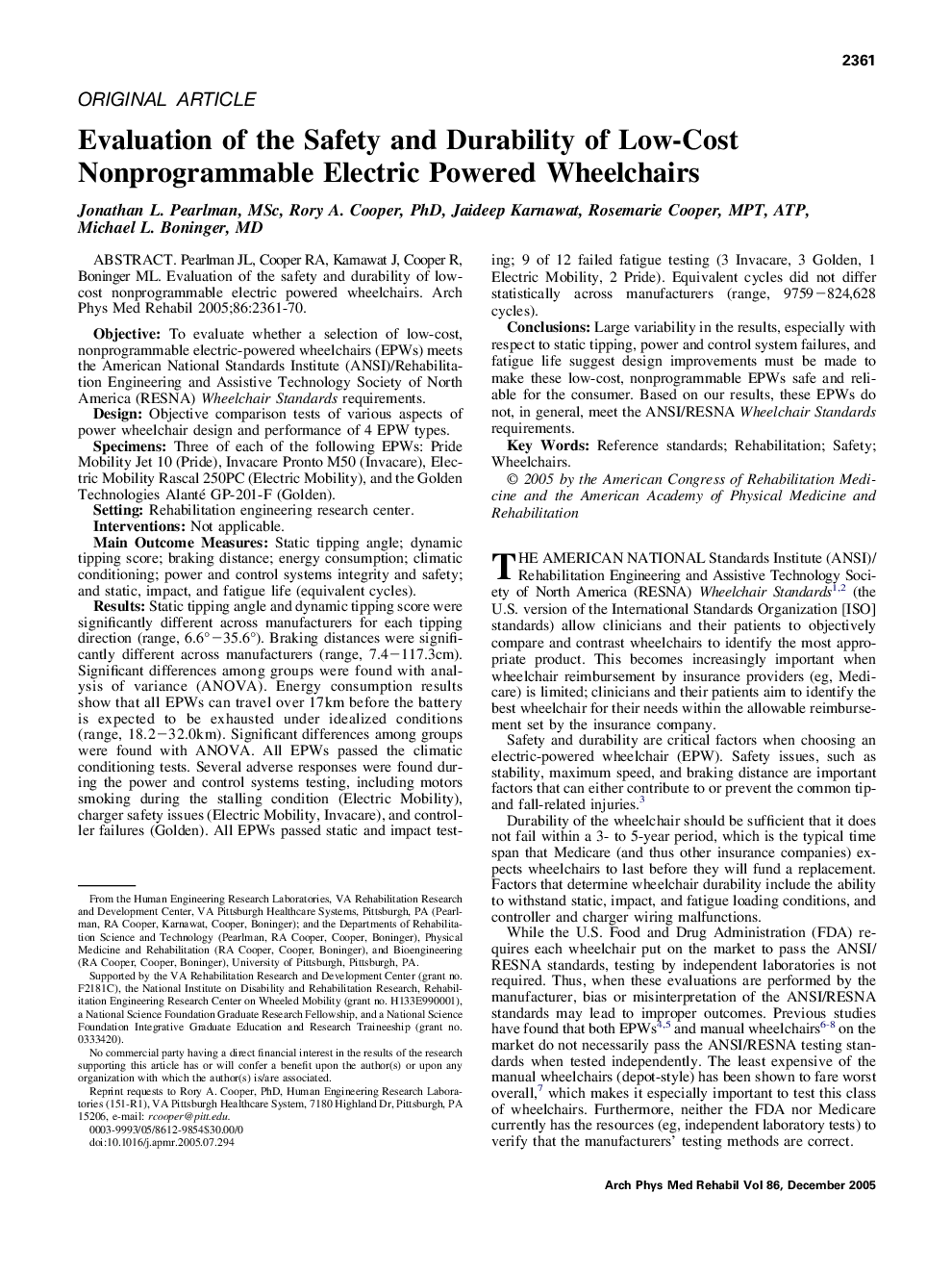| کد مقاله | کد نشریه | سال انتشار | مقاله انگلیسی | نسخه تمام متن |
|---|---|---|---|---|
| 3453314 | 1595813 | 2005 | 10 صفحه PDF | دانلود رایگان |

Pearlman JL, Cooper RA, Karnawat J, Cooper R, Boninger ML. Evaluation of the safety and durability of low-cost nonprogrammable electric powered wheelchairs.ObjectiveTo evaluate whether a selection of low-cost, nonprogrammable electric-powered wheelchairs (EPWs) meets the American National Standards Institute (ANSI)/Rehabilitation Engineering and Assistive Technology Society of North America (RESNA) Wheelchair Standards requirements.DesignObjective comparison tests of various aspects of power wheelchair design and performance of 4 EPW types.SpecimensThree of each of the following EPWs: Pride Mobility Jet 10 (Pride), Invacare Pronto M50 (Invacare), Electric Mobility Rascal 250PC (Electric Mobility), and the Golden Technologies Alanté GP-201-F (Golden).SettingRehabilitation engineering research center.InterventionsNot applicable.Main Outcome MeasuresStatic tipping angle; dynamic tipping score; braking distance; energy consumption; climatic conditioning; power and control systems integrity and safety; and static, impact, and fatigue life (equivalent cycles).ResultsStatic tipping angle and dynamic tipping score were significantly different across manufacturers for each tipping direction (range, 6.6°−35.6°). Braking distances were significantly different across manufacturers (range, 7.4−117.3cm). Significant differences among groups were found with analysis of variance (ANOVA). Energy consumption results show that all EPWs can travel over 17km before the battery is expected to be exhausted under idealized conditions (range, 18.2−32.0km). Significant differences among groups were found with ANOVA. All EPWs passed the climatic conditioning tests. Several adverse responses were found during the power and control systems testing, including motors smoking during the stalling condition (Electric Mobility), charger safety issues (Electric Mobility, Invacare), and controller failures (Golden). All EPWs passed static and impact testing; 9 of 12 failed fatigue testing (3 Invacare, 3 Golden, 1 Electric Mobility, 2 Pride). Equivalent cycles did not differ statistically across manufacturers (range, 9759−824,628 cycles).ConclusionsLarge variability in the results, especially with respect to static tipping, power and control system failures, and fatigue life suggest design improvements must be made to make these low-cost, nonprogrammable EPWs safe and reliable for the consumer. Based on our results, these EPWs do not, in general, meet the ANSI/RESNA Wheelchair Standards requirements.
Journal: Archives of Physical Medicine and Rehabilitation - Volume 86, Issue 12, December 2005, Pages 2361–2370